Forum Replies Created
-
AuthorPosts
-
Thanks for the report Col, another fine day of sailing enjoyed by all
Doesn’t look like there was much wind about, at least you got some good pics.
I have now created an album specifically for the Marine Modellers Group and their IOM sailings here.
I’ll move the other related albums there shortly
Sorry, tied up today.
Hope it all goes well and works as anticipated.
Thanks for the fine report Col, another great day of racing @ The Duck. Thanks to all who attended and joined in the frivolities.
Don’t tell the little green frog too much, you don’t want him knowing all your secrets, and yes you are safer taking everything the frog says with a grain of salt.
Yes, just a few pegs Tug, I ran out of spring clamps.
Port side deck strip now fitted & I’ve started to tidy up the deck ready for refitting.
All the safety rails & posts have been removed along with the majority of the deck rigging fittings. A quick sand down & tidy up and the deck should be ready to go back on (and hopefully not leak!!).
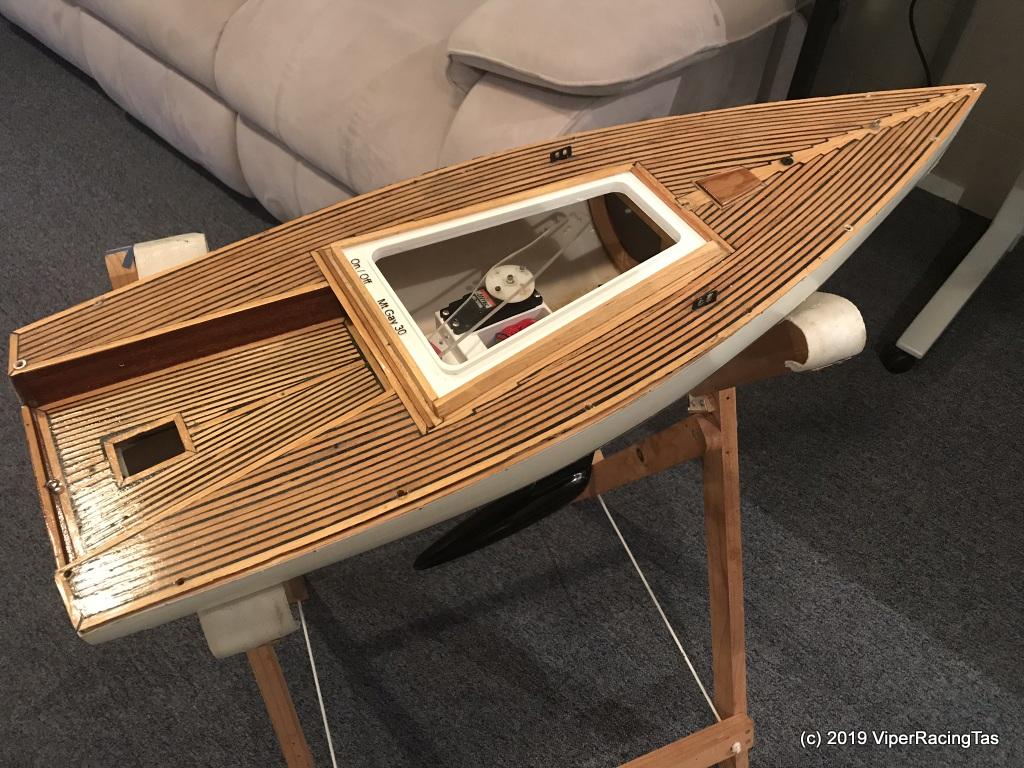
Got the Plank Strip cutter up and running today. Ended up with a Dremel timber cutting blade fitted to a Dremel Ez Lock quick release mandrel.
Mounted it in a drill press rather than the Dremel and then just a matter of setting the plank thickness as the gap between the blade & drill plate and using a pine block to keep the timber pressed against the blade while cutting.
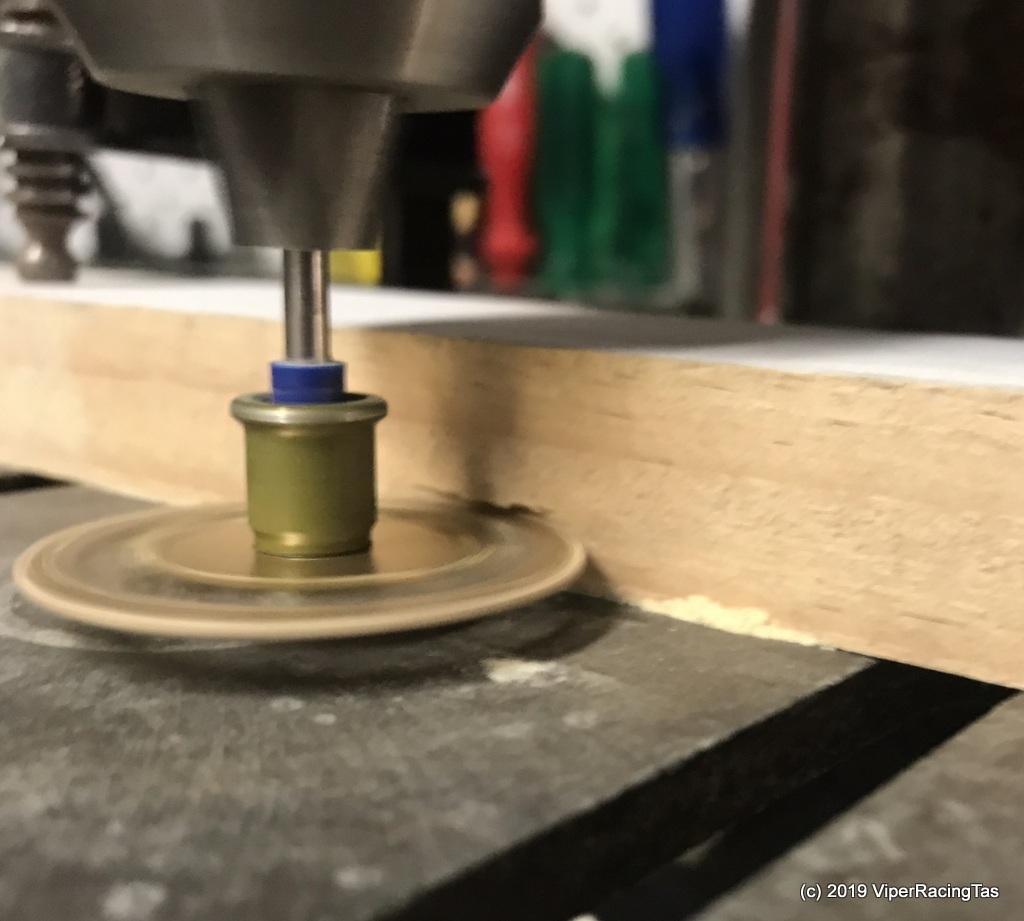
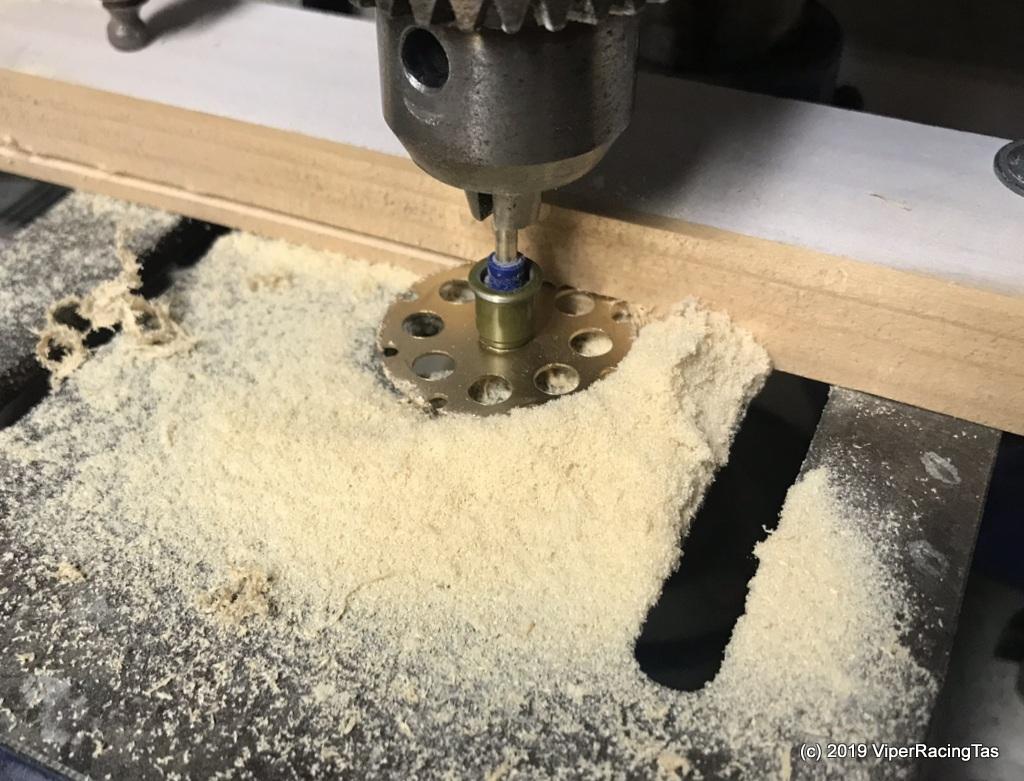
4mm x 4mm strips are required to mount the deck as there is not much clearance between the hull & the safety rail posts. As long as its well epoxied & sealed all should work out OK.
Starboard strip has been fitted & epoxied, now for the Port side & the stern
Thanks for the excellent video Gerald.
Certainly a fine turnout by the Marine Modellers Group of superbly detailed models at the Western end of the canal today, must agree that we were a bit light on at the Eastern end but fun was had none the less.
Apart from the at times very lazy wind it wasn’t a bad morning for mid winter in Southern Tas.
Man, what a beast, you will blow all the topsoil away when that takes to the air.
Continuing right along with the build,
Servo Box in the midst of printing
Note the two support bars for the stepped rudder servo section.

Servo box & mounts installed, just sorting out the timber to re-attach the deck
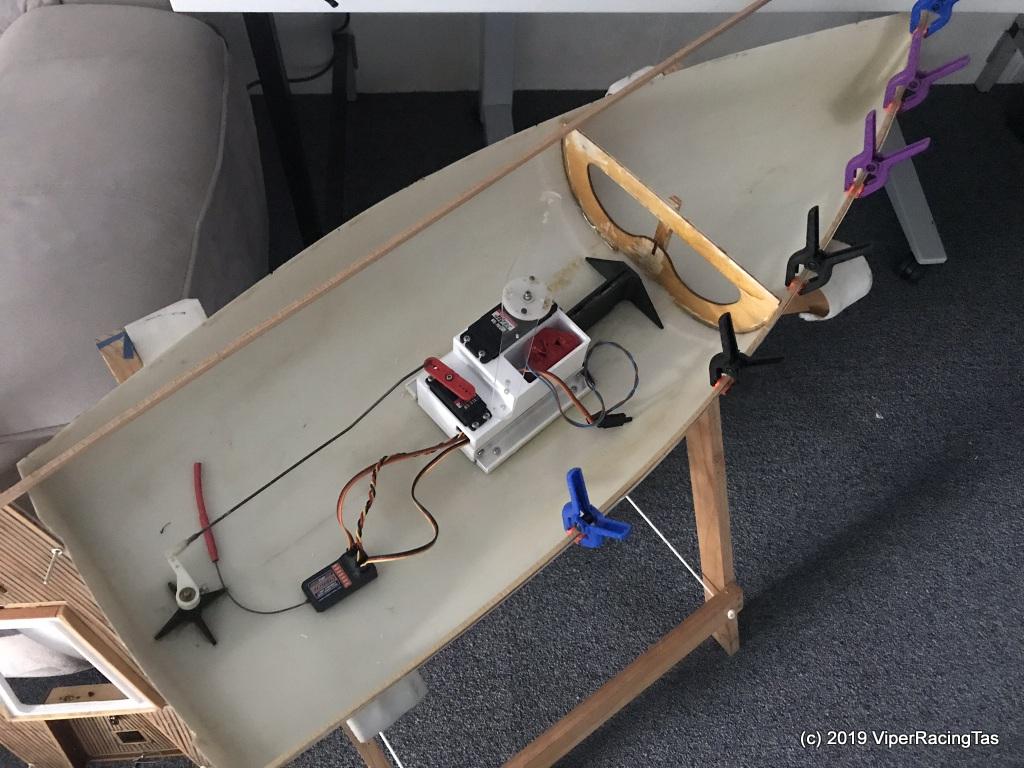
Once the deck is reinstalled the RC receiver will be relocated under the centre of the rear deck well out of the way of any water that may splash in.
Close up of Servo Box & Mounts.
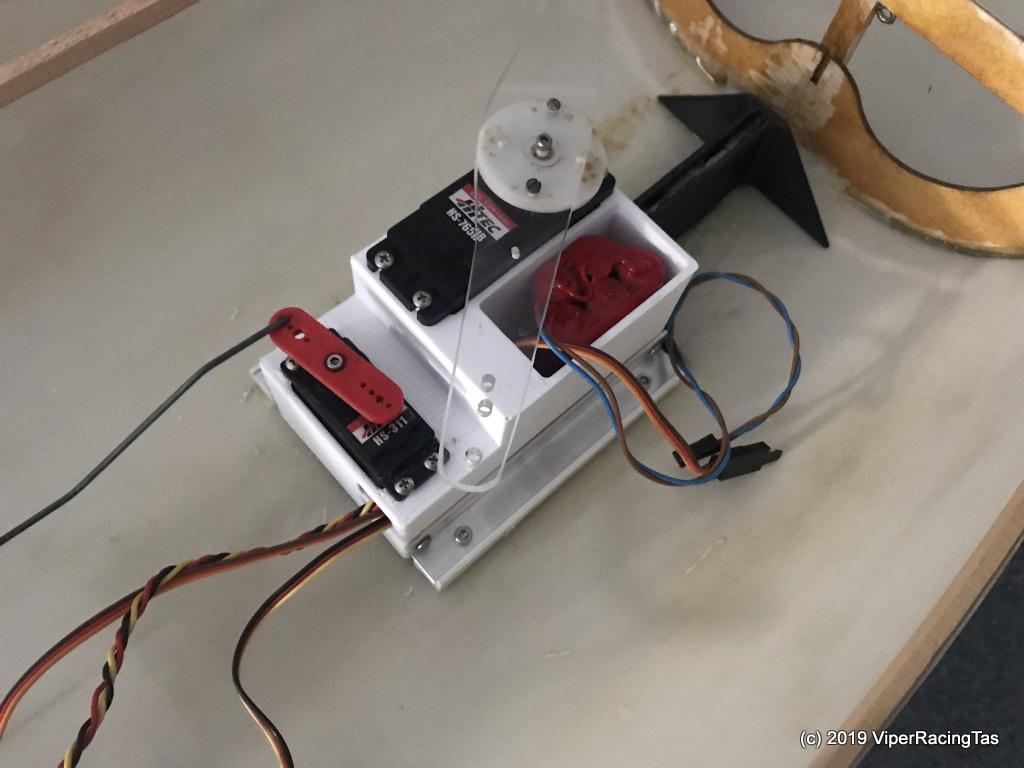
The Servo Box mounts are 12mm x 6mm x 110mm 3Dprinted rails with 3mm Nyloc nuts moulded into the bottom. These are then epoxied into the hull.
The 12mm x 12mm x 110mm aluminium angle is epoxied & screwed to the Servo box & then screwed to the mounting rails with 4 only 3mm x 10mm Stainless Steel Cap Screws.
This makes for easy removal of the entire servo tray with everything intact by just removing the 4 mounting caps screws.
Need to make up a timber strip cutter in the morning to rip the deck mount strips down to the correct size then the deck refit can start.
Can’t answer the question about my hair as even then I couldn’t see the top of my head however way back then (2014) the onboard video was rather rudimentary and the actual video recording was all done on the Ground Station.
That camera is still working and is currently the auto switch reversing camera on the Axial SCX10 Rock Crawler.
I did manage to get the Bix 2 airborne on a couple of occasions with a GoPro 2 installed on a great big CF Pan Tilt (which I still have). Will try and find a pic or two & maybe an old GoPro video. This was one of our early attempts at in air recording rather than using the Ground Station.
Things have changed a lot since, but even way back there I had Pan/Tilt control on the camera.
There were trees (that Chris was always flying around, through, over, under etc.), just that they were further up the hill, there were heaps of fences but the paddocks were much larger and the landing strip was flat for sure but very bumpy so ALL take-offs were hand launch (you learnt how to do it or stayed grounded) and it was generally very windy (but at least it was constant in speed and direction).
And of course there were cows, lots of cows much like The Farm, and not to forget the model Helicopter flying field only a couple of paddocks over.
Yes, an ideal place to learn to fly.
The ways of the world (according to the frog) are strange and wondrous things, just a shame how the truth of it all gets lost in the telling!!
I think his avatar may explain a lot, but we love him just the same.
-
AuthorPosts